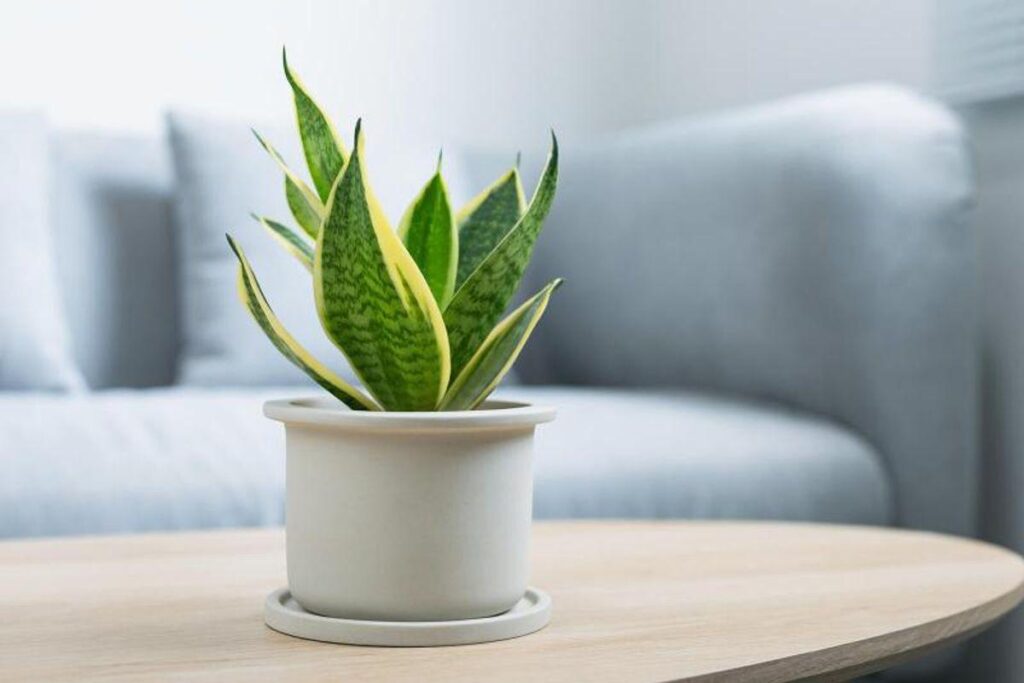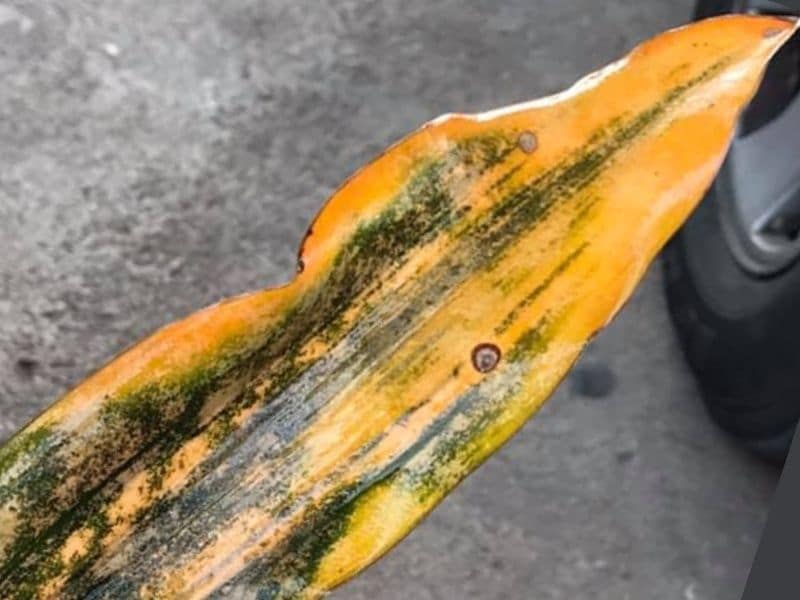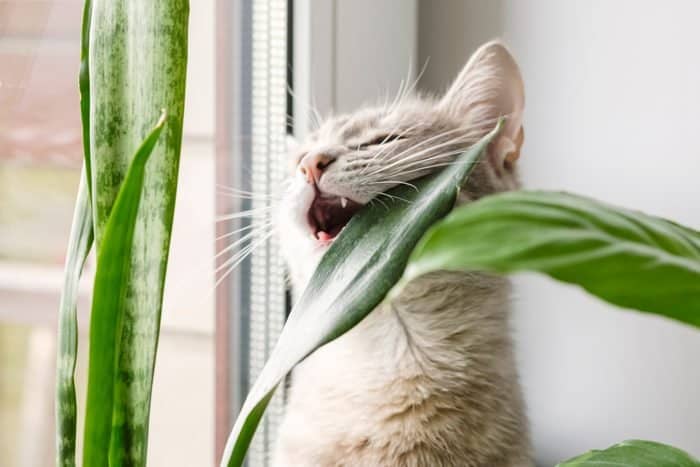Suppose you have a snake plant at your home, either you got it as a gift like me or someone recommended you a snake plant to bring home, because of its positivity and health benefits. Have you ever wondered, if there could be disadvantages of snake plants too? No, right! Of course, if you are here in this article, this only means you are eager to know about it! Luckily, in this article, I will explain snake plant disadvantages based on my personal experience all these years and the research I have done after discussing with a lot of plant enthusiasts. So, let’s begin!
Disadvantages of Snake plant

One of the most common houseplants in the market is the snake plant (Sansevieria). Many plant parents are surprised to learn that their snake plant can also have issues despite being so carefree. They have a reputation for withstanding a variety of lighting situations and abuse. It is difficult to think of anything ever going wrong with this plant. Your snake plants may have several issues, including drooping leaves, brown blotches, a lack of growth, and many more. The majority can, however, be quickly fixed, and if taken proper care of, this plant can be healed back to normal in no time.
So, now let’s check out the disadvantages that I have mentioned below!
1. The leaves become bending or droop
Snake plant leaves are distinguished by their strong, upright form. Several issues that could be indicated by drooping or bending leaves, which can be caused by overwatering. Snake plant leaves resemble succulents because they are substantial and can hold a lot of water. Because of this, they can put up with a little roughness. They may go for a few weeks without water because the leaves store a lot of water. Overwatering the plant could unintentionally result in root rot. When the roots are compromised, they are unable to distribute water and vital nutrients throughout the plant, which causes the leaves to bend.

2. The leaves become tall and thin
The leaves can droop a lot if given more than enough sunlight, but not enough sunlight can also be harmful. For photosynthesis to occur, sunshine is a necessity for plants to survive. To make sure they have enough of it, they will do every effort. This is particularly true for plants that resemble succulents, which need more sunlight than other thin-leaved plants. Snake plants will start to expand and extend in the direction of the closest light source if they don’t receive enough light. This stretching, known as etiolation, results in unusually long, narrow, and thin leaves that are not only unattractive to look at but also bad for the plant.
Give your plant additional light to solve this issue. Although these plants prefer direct sunlight for a few hours of the day, bright indirect light close to a window should be sufficient. If your plant is too far gone, you can either reproduce it by taking cuttings from the healthiest-looking leaves or wait till it sprouts branches and repot those.
3. The leaves become soggy and weak
A healthy snake leaf will feel quite thick and robust to the touch. Not always the case in unwell plants. The most common cause of soft, mushy leaves is overwatering. Overwatering can result in too much moisture in the leaves and around the plant, which can also cause them to rot, just as it can cause the roots to rot and the leaves to fall over. The mushy texture will remain when the interiors of the leaves slowly start to decompose and die off. If your pot does not have proper drainage, this issue will continue even after watering the plant properly.
Most plants require well-draining soil since they cannot be allowed to sit in water, but succulent-like plants like Sansevierias. If watering is not the problem, humidity can be. This is highly unlikely because most people cannot tolerate humidity levels high enough to result in mushy leaves. It’s not impossible, though, if your snake plant is situated next to a humidifier or in a room with regular moisture. The plant should first recover if the damaged leaves are removed and relocated to a dryer environment.
4. The leaves become distorted or irregular
If your leaves don’t appear to be quite right but aren’t mushy or falling over, you might be dealing with a pest infestation like tiny insects, mites, or thrips. They typically go unnoticed until symptoms start to appear. These insects eat the plant’s internal juices while they sit on its leaves and in the soil. The leaves will become deformed as a result of this injury, especially if it is neglected over an extended period. Different fungal infections can infect your plants in hot, humid weather, causing deformed portions to rot and die off.
Always keep a look out for indications of pest or disease issues when watering your plants. Oils, which are available at local nurseries or online, can also be used to get rid of pests. Unfortunately, fungus-related illnesses are more challenging to treat. If the issue is not too severe, you can prune away the damaged plant sections or treat the leaves with an organic fungicide before it spreads to your other houseplants. You might have to get rid of the plant if the sickness is uncontrollable.
5. The tips or patches of leaves become brown
Brown spots or points on the leaves are one of the more frequent and more concerning issues with snake plants. Damaged snake plant leaves may become brown at the point of the damage if it was caused by bad weather or transportation. Since the damage has already been done, there isn’t much you can do about it, but you can remove the leaf to encourage fresh, healthy development. Extreme temperatures or weather conditions are other factors. When a plant is exposed to frost, the cold freezes its cells, which kill the plant once they defrost. Brown stains will appear wherever the harm was done as a result. These cells won’t regenerate since they are dead. On the other hand, extreme heat can also result in browning, although this time it happens at the tips. The ends of your snake plant’s leaves may scorch and turn brown if they are overexposed to the sun.
6. Yellowing leaves become visible
One of the most typical issues with indoor plants is the yellowing of the leaves. Snake plants don’t often experience it, but it does happen occasionally. The main cause of yellowing leaves in snake plants is overwatering. In case you don’t know, one of the worst things you can do to a snake plant is by overwatering the plant. Rotting roots that are left in water will prevent plants from getting the nutrients they require.

7. The leaves become wilted
Typically, snake plant leaves have glossy, healthy-looking leaves in vivid colors. If the leaves on your snake plant are wrinkly and drab, something is wrong. Wrinkled leaves can be caused by a variety of factors, but warmth is typically one of them. Your snake plant may suffer from heat stress if your plants experience unusually warm weather for some days. The leaves will wilt as a result of the stress and extreme heat. The same issue can be brought on by excessive sunlight.
8. Curling or twisting leaves
The majority of snake plants have flat, broad leaves, especially as they get larger. Leaves start to bend or curl inward or outward if you overwater them after a certain time. For extended periods, leaves that don’t receive enough water start to lose their normal upright posture and curl inward to preserve moisture. You can be quite positive that underwatering is the main problem if it is also followed by wrinkling or bending leaves.
According to A Friendly Gardener, make sure you don’t over water your plants and that you disinfect pots before using them. This will help you avoid root rot in snake plants.

9. Brown and mushy roots
Don’t ignore the problem if you’re repotting your snake plant and discover that the roots become brown and mushy. Because the roots are important for the life of the plant, unattended root issues will certainly result in the death of your plant. Roots that are brown and mushy are caused by two problems, the most common cause is overwatering. Watering issues can contribute to almost every issue on this list, and this issue is no exception.
10. The plant is not growing
Due to the slow growth rate of snake plants, the final issue may be challenging to identify, but it still exists. Therefore, if the leaves aren’t growing in a few days, don’t panic. Inadequate growth is typically discovered after several months or even years. But if the plant suddenly stops growing or isn’t growing as much as it did in prior years, then this might be an issue.
11. It is toxic to both people and animals
One of the plants that are poisonous to both people and animals is the snake plant. The stem, leaves, and flowers may be slightly toxic if chewed or consumed. Both humans and animals are susceptible to common side effects such as vomiting, nausea, diarrhoea, drooling, and abdominal pain. Touching the plant’s juice can also cause allergies and skin rashes. The plant is poisonous because it contains a substance called saponin, which helps make medications and repel insects.

12. Fungus issues can occur
Even insects always keep their distance from this plant but fungi frequently attack it. If you decide to get a snake plant for your home, you should be aware of this significant disadvantage. The fungus typically develops a crimson leaf spot on the plant’s lovely leaves. To prevent such fungus attacks, take preventative actions.
FAQs
Q1. What happens to your snake plant if you overwater it?
Ans. Since the snake plant can withstand droughts, some people believe that watering it can promote faster growth. However, because the plant requires less water, you must ensure that the soil has enough drainage and is never consistently moist.
Q2. Which varieties of snake plants are the most attractive?
Ans. The most distinctive and alluring type of snake plant is believed to be Sansevieria Masoniana F Variegata.
Q3. Where should I put my snake plant, according to Vastu?
Ans. According to Vastu, place the plant in the southern, eastern, or south-eastern corners of the home.
Q4. Can snake plants be grown in cold climates?
Ans. The plant struggles to endure severely cold temperatures while being a subtropical plant that can withstand highly dry and hot circumstances. The combination of frozen leaves and wet soil may be fatal to the plant. Put them somewhere warm (not below 10 degrees Celsius) inside. The frost can cause irreversible, permanent harm to the foliage.
Conclusion
The plant’s evergreen growth, which is green in both bright and dark tones and mimics the skin of a snake, gives it a beautiful appearance. But with the benefits come drawbacks, so you might need to consider all of them before making a purchase. Examine the disadvantages of the snake plant to have a better understanding of the plant.
But the disadvantages that I have mentioned above, are not very bad or something to worry about, in my opinion. Let me know what you think about this issue, so comment down below, and don’t forget to share my article with your friends and family!







